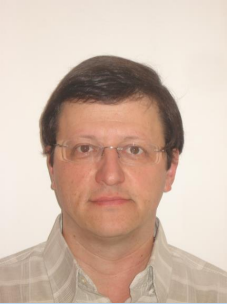Modeling Electromagnetic Phenomena in Large Quantum Systems
Abstract
Density Functional Theory (DFT) is a common method for quantum calculations that offers a good balance between accuracy and computational cost. An important challenge in both ground state and excited state DFT is the calculation of electrostatic and electrodynamic induced potentials, as well as the Fock exchange interaction. For the ground state, we present an accurate scalar Green’s function kernels to efficiently evaluate the Hartree and Fock potentials using a Fast Fourier Transform (FFT) method to solve the Poisson equation. We demonstrate the efficiency of this method, using hybrid and screened hybrid DFT, to study the properties of silicon quantum dots comprising over a thousand atoms (3 nm diameter). In the excited state, electrodynamic fields are formally incorporated within time dependent Density Functional Theory (TDDFT) by considering both induced scalar and vector potentials. The Hamiltonian is described in both the Coulomb and Lorenz gauges, and the advantages of the latter are outlined. Integral expressions are defined for the retarded potentials of each gauge and a methodological approach to evaluating these nontrivial expressions with a low computational cost is adopted. The faster potential calculations enables the study of larger systems, such as nanoscale antennas.
Date and Time
Location
Hosts
Registration
-
 Add Event to Calendar
Add Event to Calendar
Loading virtual attendance info...
Speakers
 Amir Boag of School of Electrical Engineering, Tel Aviv University
Amir Boag of School of Electrical Engineering, Tel Aviv University
Modeling Electromagnetic Phenomena in Large Quantum Systems
Abstract
Density Functional Theory (DFT) is a common method for quantum calculations that offers a good balance between accuracy and computational cost. An important challenge in both ground state and excited state DFT is the calculation of electrostatic and electrodynamic induced potentials, as well as the Fock exchange interaction. For the ground state, we present an accurate scalar Green’s function kernels to efficiently evaluate the Hartree and Fock potentials using a Fast Fourier Transform (FFT) method to solve the Poisson equation. We demonstrate the efficiency of this method, using hybrid and screened hybrid DFT, to study the properties of silicon quantum dots comprising over a thousand atoms (3 nm diameter). In the excited state, electrodynamic fields are formally incorporated within time dependent Density Functional Theory (TDDFT) by considering both induced scalar and vector potentials. The Hamiltonian is described in both the Coulomb and Lorenz gauges, and the advantages of the latter are outlined. Integral expressions are defined for the retarded potentials of each gauge and a methodological approach to evaluating these nontrivial expressions with a low computational cost is adopted. The faster potential calculations enables the study of larger systems, such as nanoscale antennas.
Biography:
Biography: Amir Boag received the B.Sc. degree in electrical engineering and the B.A. degree in physics in 1983, both Summa Cum Laude, the M.Sc. degree in electrical engineering in 1985, and the Ph.D. degree in electrical engineering in 1991, all from Technion - Israel Institute of Technology, Haifa, Israel.
From 1991 to 1992 he was on the Faculty of the Department of Electrical Engineering at the Technion. From 1992 to 1994 he has been a Visiting Assistant Professor with the Electromagnetic Communication Laboratory of the Department of Electrical and Computer Engineering at the University of Illinois at Urbana-Champaign. In 1994, he joined Israel Aircraft Industries as a research engineer and became a manager of the Electromagnetics Department in 1997. Since 1999, he is with the Physical Electronics Department of the School of Electrical Engineering at Tel Aviv University, where he is currently a Professor.
Dr. Boag's interests are in computational electromagnetics and acoustics, numerically efficient algorithms for quantum-electromagnetic simulations, radar imaging, and design of antennas and optical devices. He has published over 130 journal articles and presented more than 290 conference papers on electromagnetics and acoustics. Prof. Boag is an Associate Editor for IEEE Transactions on Antennas and Propagation. He is a Fellow of the Electromagnetics Academy. In 2008, Amir Boag was named a Fellow of the IEEE for his contributions to integral equation based analysis, design, and imaging techniques.
Address:School of Electrical Engineering, Tel Aviv University, Tel Aviv 69978, Israel, Tel Aviv 69978, Israel, Tel Aviv District, Israel, Tel:972-3-6408765

